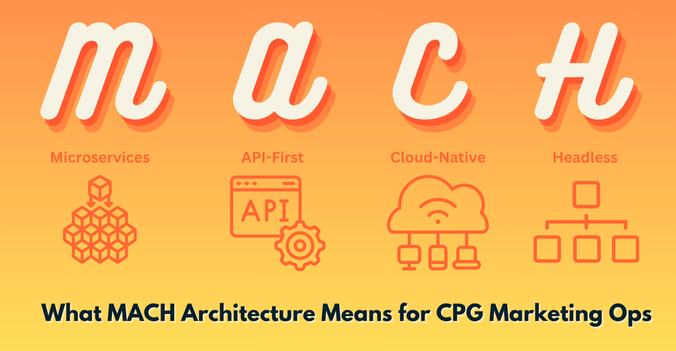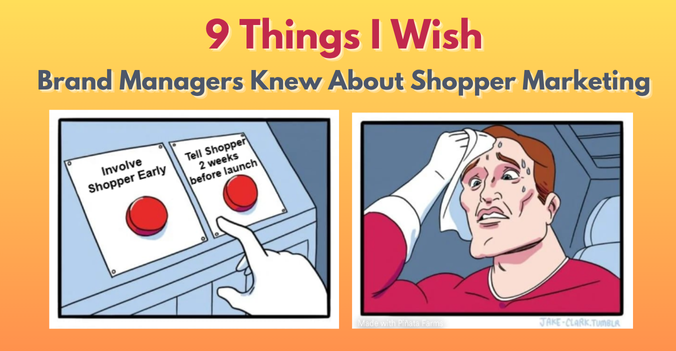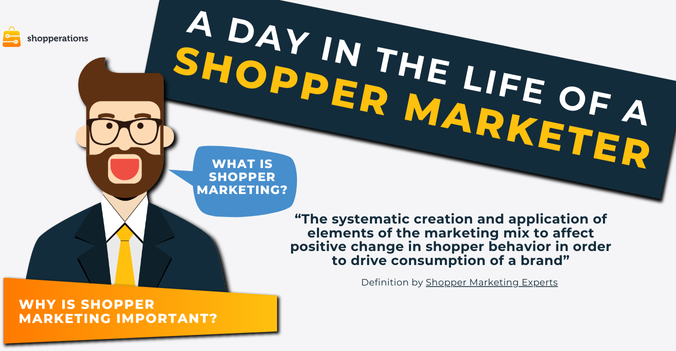
In my 15-plus years in CPG marketing, I’ve lived on both sides of the fence: HQ-based brand marketing and field-based shopper marketing. These teams work side-by-side, but let’s be honest, they still speak different dialects. The way they think, plan, and measure success can be wildly different, and that mismatch creates friction that never seems to go away.
I was reminded of this again recently during a conversation with an industry friend. She was frustrated, and genuinely exhausted, that in 2025, with retail media dominating budgets and shoppers more empowered than ever, so many companies still don’t understand shopper marketing.
You’d think that by now, with retailers functioning as full-blown media empires, shopper data becoming the most valuable currency in the building, and AI generating PDPs faster than we can approve them, the discipline would finally get the respect it deserves. Yet here we are, still having the same conversations we were having in 2017. Many organizations continue to undervalue shopper marketing or treat it like an afterthought.
So instead of unpacking why this problem persists (that’s a topic for a separate article) let’s get right to the point. Here are the nine things brand managers absolutely must understand about shopper marketing in 2025 if they want their plans to actually work in the real world.
1. Shopper Marketing has never been just “in-store”
If you still equate shopper marketing with endcaps, floor graphics, demos or coupons, we need to talk. Shopper marketing spans the entire path-to-purchase, from sponsored search and shoppable videos, direct mail, out of home ads, to loyalty apps and generative content powered by AI.
Retailers have become media companies. They sell audiences, not just shelf space. Their algorithms determine which brands shoppers see first. If your brand’s “shopper plan” doesn’t include retail media, personalization, and data-driven content, you’re leaving influence (and sales) on the table.
2. Shopper Marketing lead times are way longer than you think
Proper shopper marketing has always required ample execution lead times to take into account the JBP process and retailer planning timelines. This problem is getting worse now. Retail media calendars are built quarters in advance, JBP commitments are negotiated months before the new fiscal year starts, and integrating data feeds or measurement tools takes time.
While you can quickly adjust your digital tactics on the fly, do not be tempted to procrastinate with the strategic part of shopper marketing. If your brand planning starts in Q3 for the following year, your shopper team is already behind. With this approach, they have neither the time to leverage your brand investments with retailers, nor adapt your campaign messaging for the retail realities.
3. Successful product launches require retailer alignment
Back in the day, it was enough to ship samples and pray for an endcap. Today, success requires syncing with retailers’ digital shelves and recommendation engines.
Retailers want to co-create launches with your product months, if not years in advance to ensure they’re part of your innovation story. They’ll help with targeting, placements, and predictive analytics if you invite them in early. Brands that hold their cards too close to the chest risk missing out on data insights and slower sell-in later. Read more about what retail marketers wish brands knew.
4. Be realistic about what shopper marketing can actually deliver, and what it costs to do it well
Please don’t show up last minute with $18,000 and expect a meaningful activation at Walmart. And no, a two-week digital coupon isn’t going to fix a quarterly volume gap. In 2025, shopper marketing includes retail media placements, audience targeting, data fees, creative testing, and measurement. That stack adds up fast.
To get real ROI, you need retailer partnership, not one-off tactics. Without support like feature space, display commitments, or prioritized media placements, your investment barely moves the needle. And if you want a major retailer to take your pitch seriously, to unlock incremental merchandising, visibility, or category reinvention opportunities, you have to invest at a level that matches the scale of their ecosystem. The days of “small budgets, big miracles” are long gone.
5. Your brand POD and RTB are not the star of shopper campaigns, and that’s intentional
National advertising builds equity, emotion, and long-term brand value. Shopper marketing has a very different job. Our job is to convert: to make your product easy to find, easy to choose, and easy to buy at the exact moment a shopper is deciding.
On the physical shelf, we still have those infamous 3 to 7 seconds. Online, we have even less before an algorithm recommends someone else. That means we prioritize appetite appeal, clear benefits, and strong calls-to-action. Simplicity wins. Speed wins. Relevance wins.
Shopper activations also often feature solutions, not always a single brand’s features & benefits. Think bundles, meal ideas, seasonal missions, or value messages. The focus is on solving the shopper's problem, not spotlighting every element of your brand’s positioning deck.
This isn’t diluting the brand. It’s adapting the brand to the moment where the sale actually happens.
6. Shopper marketers manage a stakeholder maze that’s only gotten more complex
Our job was never simple, but in 2025 it’s a full-contact sport. Shopper marketers don’t just balance Brand, Sales, Legal, Finance, Insights, and the retailer’s merchandising and marketing teams anymore. Now we’re also coordinating with retail media teams, data science, media agencies, eCommerce content squads, measurement partners, and whatever new AI tool the organization just adopted last Tuesday.
Everyone has a POV, everyone has a dependency, and everyone wants something slightly different. You can’t keep every stakeholder perfectly happy, and trying will burn you out. The best shopper marketers focus on alignment, influence, and momentum. We cut through noise, navigate conflicting agendas, and keep the commercial plan moving forward, because if we don’t, nothing launches on time.
7. The look and feel of shopper materials are often non-negotiable — and it’s not us being difficult
Retailers have always been particular about POS, but in 2025 their rules are even tighter because they now control both the physical display environment and the digital shelf. Their style guides, templates, media specs, and UX constraints leave very little room for customization.
So when I tell you I can’t change the pallet header color or adjust the layout of your product tiles, I’m not being stubborn. I’m working within retailer mandates designed to protect their brand, their shopper experience, and increasingly, their algorithms.
Physical POS, digital content, headlines, image ratios, keyword placement — all of it is governed by retailer standards. We stretch where we can, but some things simply aren’t up for debate.
8. Cutting shopper budgets has consequences far beyond lost volume
If a program has already been presented and aligned with a retailer, it carries merchandising, media, and visibility commitments. Pulling those dollars at the last minute doesn’t just jeopardize your quarterly volume bridge, it disrupts the retailer’s plan, their algorithms, and their expectations of your brand.
And in 2025, retailers track everything: spend levels, media consistency, participation in category initiatives, and reliability as a partner. Cutting funding without warning can hurt your credibility, downgrade your media privileges, and may cost you a seat at the table. Before you pull the plug, talk to your shopper team. We know where the commitments sit, what relationships are at stake, and how to adjust without damaging trust.
9. Retail media only works when Shopper Marketing owns the strategy
Everybody already knows retail media is a major lever. The real problem is when it gets carved out and handed to a media agency or a standalone team with no connection to shopper strategy or JBP discussions. That silo is where ROI goes to die.
Let media experts handle the mechanics, the bidding, pacing, optimization, reporting. That’s their wheelhouse. But the strategy behind the investment, the timing, the messaging, the category story, and how those dollars are positioned with retail buyers – that needs to live in-house, with Shopper Marketing.
Because Shopper Marketing sits closest to the retailer relationship, the commercial plan, and the category objectives. If the retail media plan isn’t aligned to the retail strategy, you’re just buying impressions instead of buying influence. The brands that win are the ones where retail media is tightly woven into JBP, activation plans, and retailer conversations, not sitting off in a separate spreadsheet with no context.
Shopper marketing used to be the last mile of a campaign. Today, it’s the connective tissue between brand strategy, retail partnership, and consumer behavior. The brands that win aren’t the ones shouting the loudest or throwing the most dollars around; they’re the ones that align early, plan smarter, and adapt fast. Thoughtful and well executed shopper marketing isn’t a mere tactic or a cost center, it’s your competitive advantage.
Alright, your turn: What’s the one misconception about shopper marketing you wish your brand partners would finally retire?



.png)






